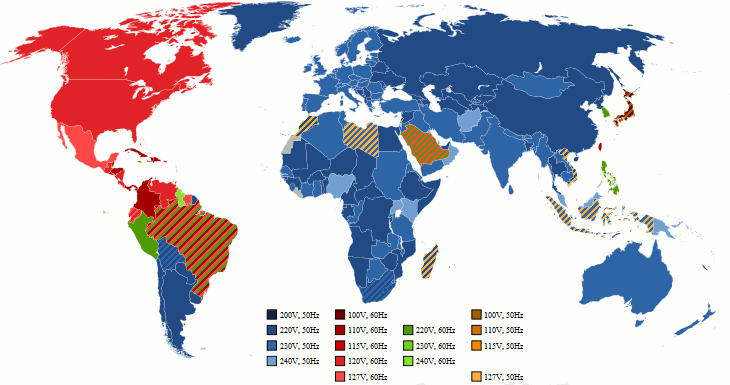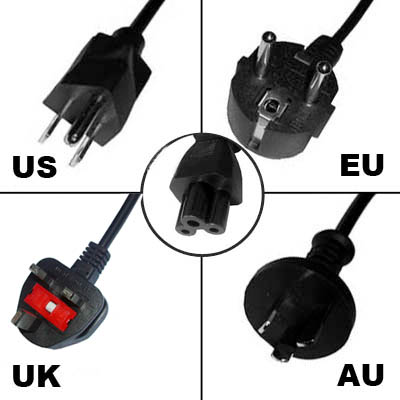Why doesn’t the US use 220V like everyone else in the world?
Common question about household electrical power supply
It’s a common question tied to a couple of common
misconceptions. First is the idea that the United States is the
only country in the world to use the 120V 60Hz standard. The
fact of the matter is that there are many other countries that
primarily use 120V. To this end, there is no “everyone else in
the world”. Some countries use 240V, some 230V, others 220V, and
so on. Just take a look at the map below to get a clearer
understanding of the global disparity:

To answer the question, though—the US does have a higher power supply. Nearly all homes in the US have 240V alternating current lines at the service entrance to the household as well as select locations within the home. The reason it’s 240V is because that’s the power line that has been standardized over here. Some European countries use 220V, while some specify 230V; most appliances will accept 220-240V however.
The appliances hooked up to this higher power supply (generally speaking) include more energy dependent machines like ovens and laundry machines. Regular appliances like lamps, laptops, and phones do not need access to this power.
For those who are surprised to hear households have 240V
coming into the home, the way it works is as follows: right
prior to the residence entry, the line transformer secondaries
are center-trapped so as to provide split-phase 240V on two hot
legs (1 and 2) and neutral at the center tap (which is
referenced to Earth at the breaker box). For most home outlets,
either leg 1 or leg 2 is used with the neutral line to provide
120V alternating current to power small appliances with a
plug-in cord. In this sort of set-up, there won’t be any outlet
above 120V. Also, if you looked at both legs at the same time,
they’d both appear to be 180 degrees out of phase from one
another.
For larger appliances, as in the case of the aforementioned oven
and laundry machine, they will use leg 1 to leg 2 voltage, which
is a straight shot of 240V line to line out of special outlets,
or otherwise specially hardwired to specific areas of the home.
While larger appliances generally draw approximately 1800 watts
(15 amps at 120V), these special outlets / hardwired spots can
take up to 7200 W (30A at 240V).
Now, historically speaking, one of the main reasons why the US
stuck with 120V as its standard power supply largely has to do
with the fact that it was initially tied to carbon filament
lighting. Later, a metal filament was created which could be
used for more efficient power distribution systems using 220V,
but since the country’s power grid was already largely
established using 120V infrastructure, there was no real gain to
scrapping the initial system just to go with a new
higher-voltage system. So 120V was made the standard.
The United Kingdom is one area of the world that did change
things up after setting up its power grid. It was much smaller
than the United States version, but could not be supported after
World War II when the UK began running out copper to rebuild its
infrastructure. To fix the problem, it decided to instead build
the fuse into their plugs; this, as opposed to having all
outlets connected to a fuse box individually. This is why the
outlets in the UK are different from those in mainland Europe.

So, the answer to the question is a nation’s needs come before global unity. It doesn’t make sense to change everything just to be the same as everyone else. The only time it does make sense to harmonize a power grid is to make it possible to join power grids, or to make using another country’s electrical equipment easier. The US has a substantially larger grid than many other countries in the world, and a large domestic market that uses it to great extent so, from a global trade perspective, there’s nothing really driving the US to update its power grid.
What’s more, considering the fact that many of today’s digital electronics and switching power supplies are able to work on a majority of the world’s domestic main power voltages and frequencies, there’s no change coming in the foreseeable future.
Learn more about Electronic Products Magazine